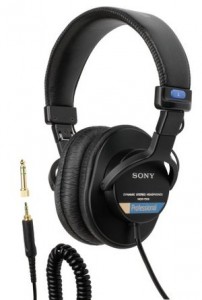I am bit of a stickler for audio quality and fidelity, as readers of my holiday gift guide and recent review of iHeartRadio may have sussed out. I’m reticent to call myself an audiophile because I’m not in pursuit of perfect audio nirvana, nor am I willing to spend the price of a new family sedan on speakers and amplifiers. But I do prefer to listen to well reproduced music. I am willing to spend some money and time to obtain higher fidelity, but I also don’t think it must require significant investments of either.
As I noted in my aforementioned iHeartRadio post, compressed online digital audio can exhibit many sonic defects resulting from that compression and other processing. Of course, one can complain about the sound quality of a free streaming radio service, but if it’s that grating I just don’t listen.
If I’m going to subscribe to an online radio service, like Pandora or Spotify, then I expect to enjoy decent fidelity, even if true CD quality is unlikely. Writer John Grandberg recently wrote a review of the sound quality of streaming radio services for Inner Fidelity. That site is affiliated with the venerable hi-fi magazine Stereophile and focuses on personal audio listening with headphones.
In order to winnow down the field Grandberg excluded services that offer streams at bitrates of 128kpbs or lower. While 128kbps has long been considered the lowest acceptable bitrate for so-called “near-CD quality,” at this point in time most serious listeners contend that higher bitrates are better. He also only reviewed the subscription versions of services, which typically offer better sound quality than their free versions.
He ended up putting five services to the test: Pandora, Aupeo!, Spotify, Rdio and Mog. Of these three are on demand services (Spotify, Rdio and Mog) and two are more radio-like, without the ability to select specific artists and tracks (Pandora and Aupeo!). I have to admit that I’d never heard of Aupeo! before reading this review, though apparently the Germany-based service has been around since 2008.
I won’t give away the results here, but I found them interesting, as it seems like several very popular platform offer widely varying sound quality, probably due to their catalogs having been encoded at different bitrates over time. This is good information for the potential subscriber to have, and I’m honestly surprised that more reviews don’t take a critical ear to sound quality.



